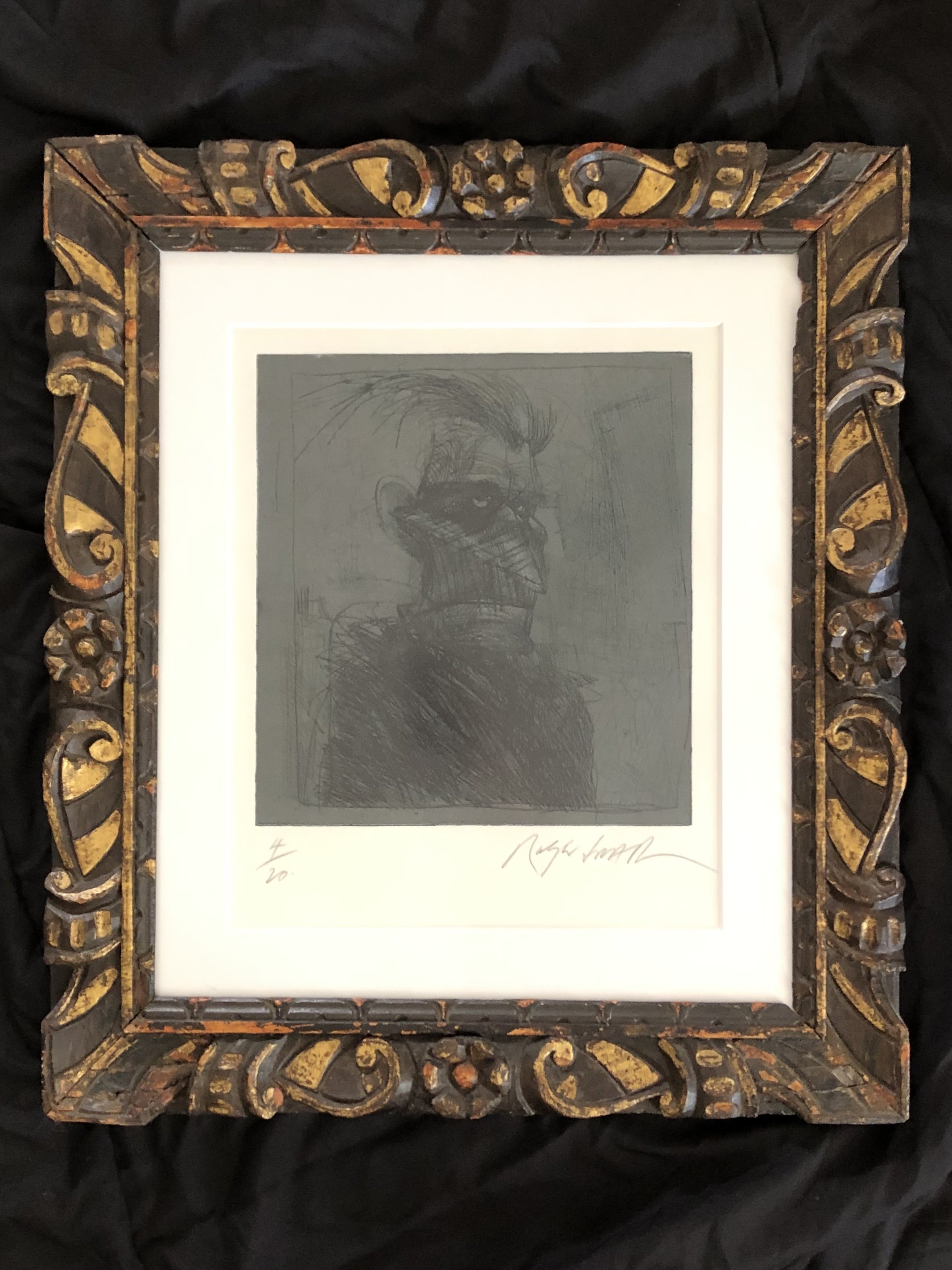My passion for frames began out of the blue decades ago. I was transfixed by their physical nature, the nuts and bolts of it all: the carving, the finish, the construction. At the same time, I had a kind of reverence for art; it was more than just pretty pictures. The way I saw it, our walls don’t just protect us from the elements. They’re the limits of our sanctuary, so we festoon them with all manner of images against what lies without. Away from home, we endlessly, futilely chase the horizon; inside, we’ve caught it and put it on display.
Our walls carry a heavier burden than we think.
So when I encountered a philosophical take on the frame, I came to see them anew. It was a simple idea, that the frame is the border between reality and fantasy. In more purple prose, José Ortega y Gasset wrote that the gilded frame “inserts a ribbon of splendor between the real and the unreal world,” as an angel brandishing a flaming sword protects the entrance to paradise.
Heady stuff.
I’d already seen them as having multiple jobs: Beyond the basic function of protection and support, the frame pulls the eye away from the work and brings it back; echoes something of the art even as the pairing creates a new whole greater than the sum of its parts. Unquestionably powerful, a frame is in a curious fix; it’s literally supportive but also deferential, even forced to simultaneously shout and whisper.
Now they were something even greater: powerful portals, transition points between the real world and the dream world of art. Seeing the frame as imbued with magical powers came to inform my approach to pairing frame and art. It’s an eye-opening and fun process even though the time between purchase and hanging on the wall can be serendipitous and swift, or glacially slow.
Fortunately, there are no hard and fast rules about the frame any work needs, no insistence on color or material or size. Having done this for many years, I’ve found that all that is really needed are a sense of balance — in color, shape, and proportion — and a measure of wit. As for conventions of periods and countries and styles, they can provide some direction, but I’m always prepared to ignore them completely.
What I really like is the opportunity to add my own touch to a work of art that moved me in some way. There is the physicality of the complement — there it hangs on the wall — but also a mystical component, something aside from the visual. Each pairing is a response to two different pieces of art, two works likely from disparate worlds and times. My efforts are a kind of homage to artists and artisans, and I see my walls as filled with objects of devotion.
If you think that I take this a bit too seriously, check out what the poets have to say about the meaning and value of art. I’m just saying that you shouldn’t undersell the power of capturing your horizon.
You can’t be afraid to add a little magic to the picture.
Below are three other pairings that please my eye. Comments welcome!
I’ve owned many Sansovino (17th c. Italian) frames; this particular version had me at hello. I happily hung it empty for years and then chanced upon this Ralph Steadman portrait of Samuel Beckett. A trip to any major museum will find a Sansovino, the ur portrait frame, most likely holding the image of a richly dressed Renaissance noble. This pairing is a wry melding of gonzo art in a centuries-old beauty. I realize that like olives or sardines this is an acquired taste, but I give it full marks.
I have to confess a Gary Larson-like love of cows; they are — to me — dream subjects that can be serious, comical, heroic, and goofy in any medium. This piece, “How now?” by the amazing British artist Nicola Hicks is a cornerstone of my always growing bevy of bovines that spans five centuries. For under $100 this mid-century frame was a fantastic find. Its tone and texture perfectly complement this delightfully sweet and sketchy etching.
For many years, I had a thing for John Taylor Arms’s gargoyles, He was a draftsman nonpareil and I loved the way he rendered texture. I wasn’t sure what I wanted to do frame-wise with this etching of a Mayan ruin, but a box lot of frames purchased at auction gave a lucky answer. Among the assortment was this little frame (6” x 5”), a perfect mess for which I paid maybe ten dollars. It had been cut down, the corners didn’t match, the finished had rubbed off, and the gilded sight edge had been scumbled with paint, but it made a most happy marriage with the artwork. Everything is wrong about this little frame but that is what makes it so right.




